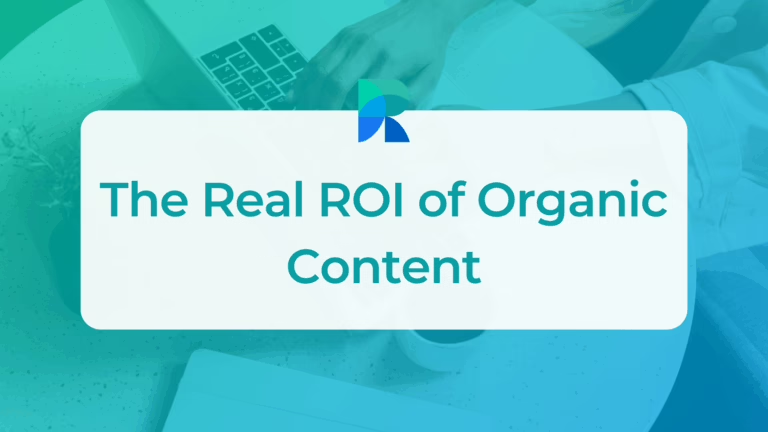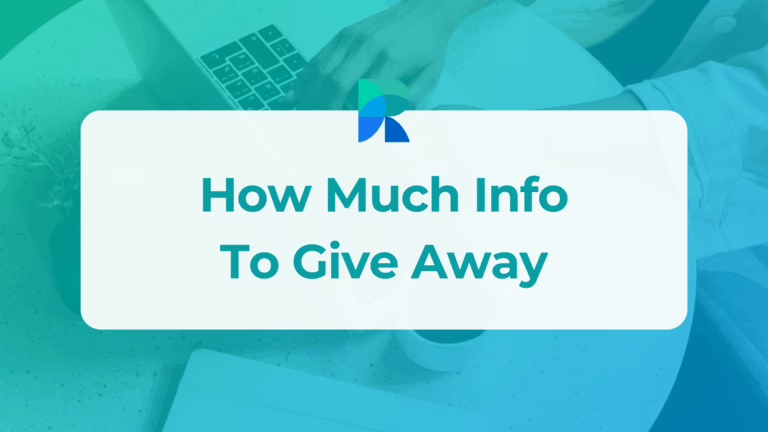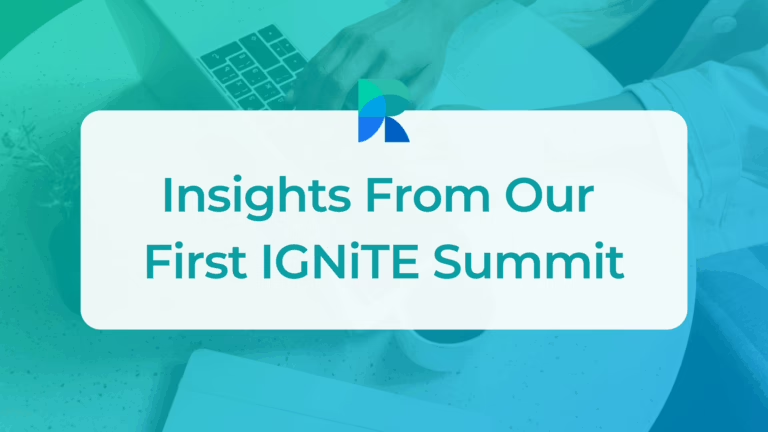Creating content can feel like a waste of time, especially when you’re focused on hard ROI. But that assumption misses the bigger picture.
The right kind of content builds long-term value. And yes, we’re talking about real, measurable ROI!
Let’s break it down the value of great organic content in today’s article.
Great Content Works
To be clear, not all content is valuable. We don’t advise posting selfies or pictures of your lunch. We teach our clients to create educational content.
Content that earns trust and positions them as the Favorite Teacher in their industry. The kind of content that actually helps their prospective buyers. When done consistently, this kind of content compounds in value. It creates leverage. And it works, both in ways that are easy to measure, and ways that are harder to quantify but just as impactful.
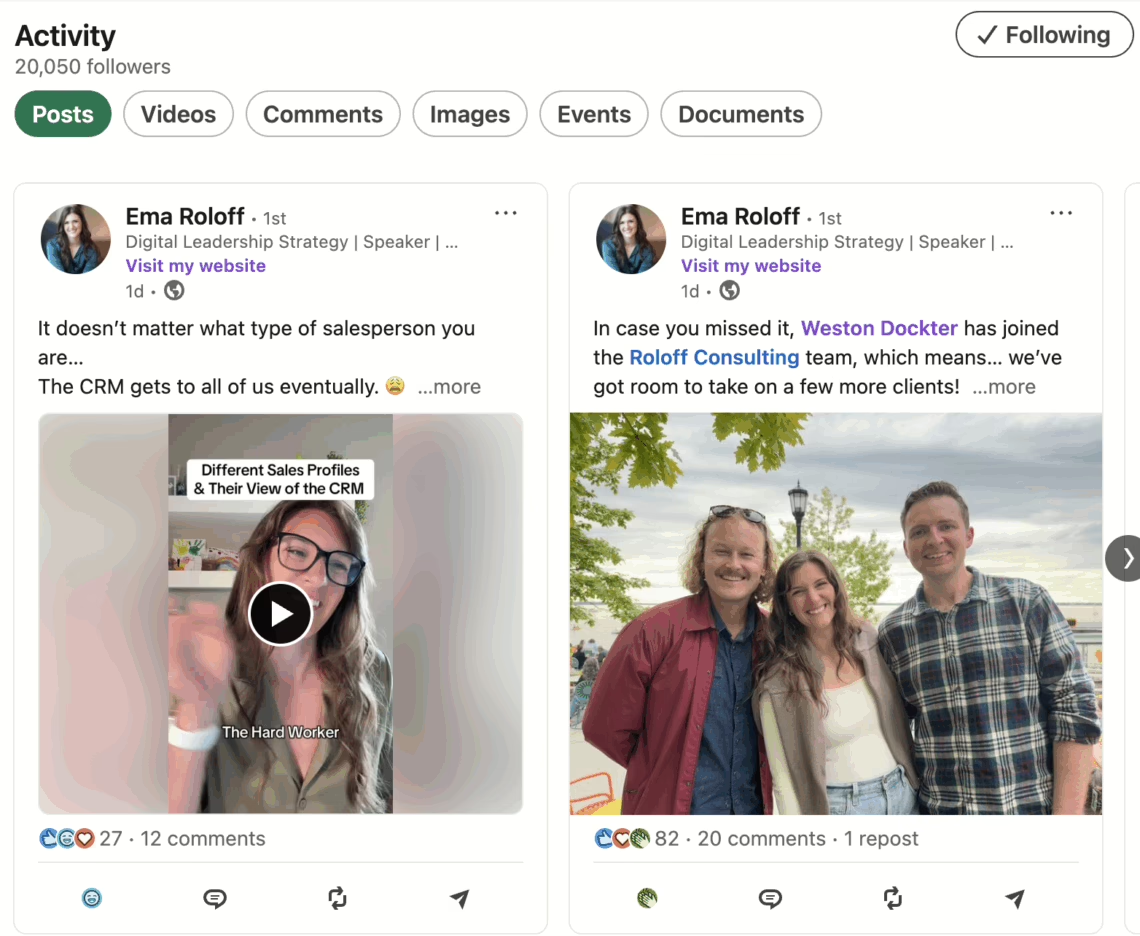
The Soft ROI of Organic Content
Let’s start with the intangible, but incredibly important benefits.
First, authority. Over time, regular content builds the perception that you are a trusted expert. The more valuable content you share, the more people begin to associate your name with helpful insights and clear solutions. This is what we call the “Favorite Teacher effect.” Your audience may not even remember how they first came across you, but they remember that you’re the one who helped them understand something that was previously confusing.
Content also opens doors to new opportunities. When people see you showing up consistently online, you start getting invited into more conversations. You might be asked to join a panel, speak at an event, or be a guest on a podcast. Many companies pay thousands of dollars to get that kind of visibility and educational content can earn it for free.
It also plays a key role in nurturing deals. One of our best clients came from a referral we met at an event. That decision maker followed us online, and after five months of seeing our posts, they reached out. That deal didn’t come from a cold pitch. It came from trust built slowly, post by post.
Another underappreciated benefit is recruiting. In a competitive market, top talent is looking for companies that stand out. If your team is regularly publishing content that shows thought leadership and culture, you’re sending a strong signal to potential hires: this is a place worth working.
And finally, content helps you clarify your own message. When you post consistently, you start to see what resonates. You refine how you talk about the problems you solve, and your sales conversations get sharper. We’ve seen it over and over: people get better at pitching simply because they’ve been creating.
The Hard ROI of Organic Content
Now let’s talk numbers.
Organic reach has a dollar value, especially when you compare it to paid advertising. On LinkedIn, the average cost per thousand impressions (CPM) is between $30 and $50. That means every 1,000 impressions of your content is worth about $40 in ad spend. Over the past year, my content earned 2.3 million impressions. At $40 per CPM, that’s $92,000 worth of visibility. Ema’s content went even further with 27 million impressions, worth over $1 million in ad spend!
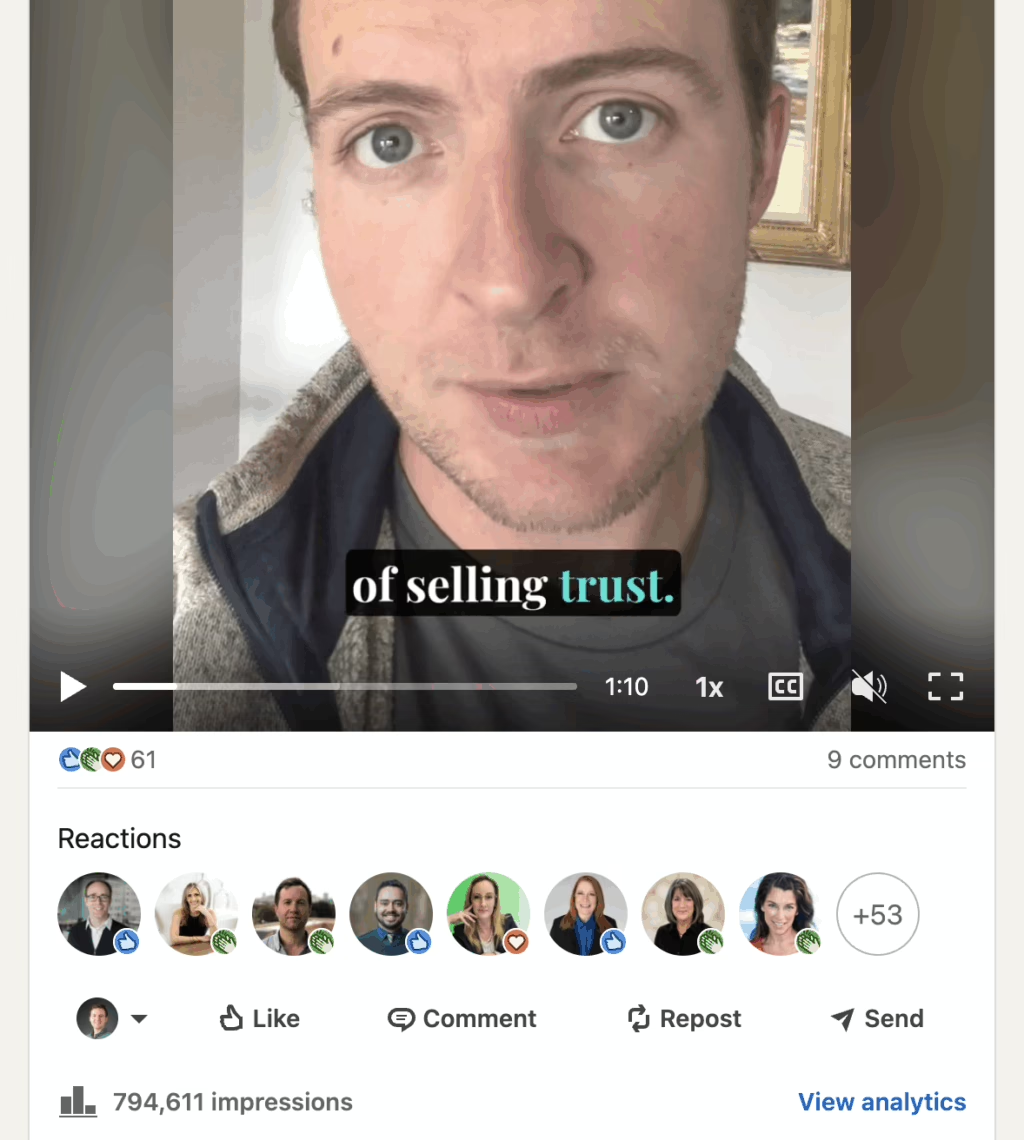
Of course, reach alone isn’t the goal. You need that visibility to turn into action. That’s where lead generation comes in. One of our posts last year brought in 75 email signups for a campaign we ran. Two of those people became paying customers. That single post directly contributed to revenue.
Unlike ads, which stop the moment your budget runs out, great content keeps working. A strong post can continue to drive visibility, engagement, and leads for weeks or months. That’s the power of organic content. It creates a lasting impact with no ongoing spend.
When Paid Reach Still Makes Sense
That said, paid reach still has its place. If your goal is highly targeted visibility, like getting in front of a specific job title or retargeting visitors who’ve been to your website, ads can be a smart play. They let you control who sees the message and when. But they should be a complement to, not a replacement for, the organic engine you’re building.
The Bottom Line: Organic Content is Valuable
Organic content is valuable. In fact, when done well, it’s one of the highest-ROI activities a business can invest in. It builds trust, expands reach, drives leads, and compounds over time. The returns aren’t always immediate, but they’re real and they’re measurable.
And that’s something no algorithm change can take away.
Key Takeaways
- Educational content builds trust and positions you as the “favorite teacher” in your industry; someone people look to for answers.
- Soft ROI includes stronger brand authority, new speaking opportunities, improved sales messaging, and better recruiting.
- Hard ROI includes measurable value from reach (using CPM comparisons) and direct lead generation that turns into paying customers.
- Organic content compounds over time. Unlike paid ads, which stop when your budget ends, your posts continue to deliver value.
- Paid reach still has a role, especially for targeting specific audiences, but should support, not replace, your organic strategy.

